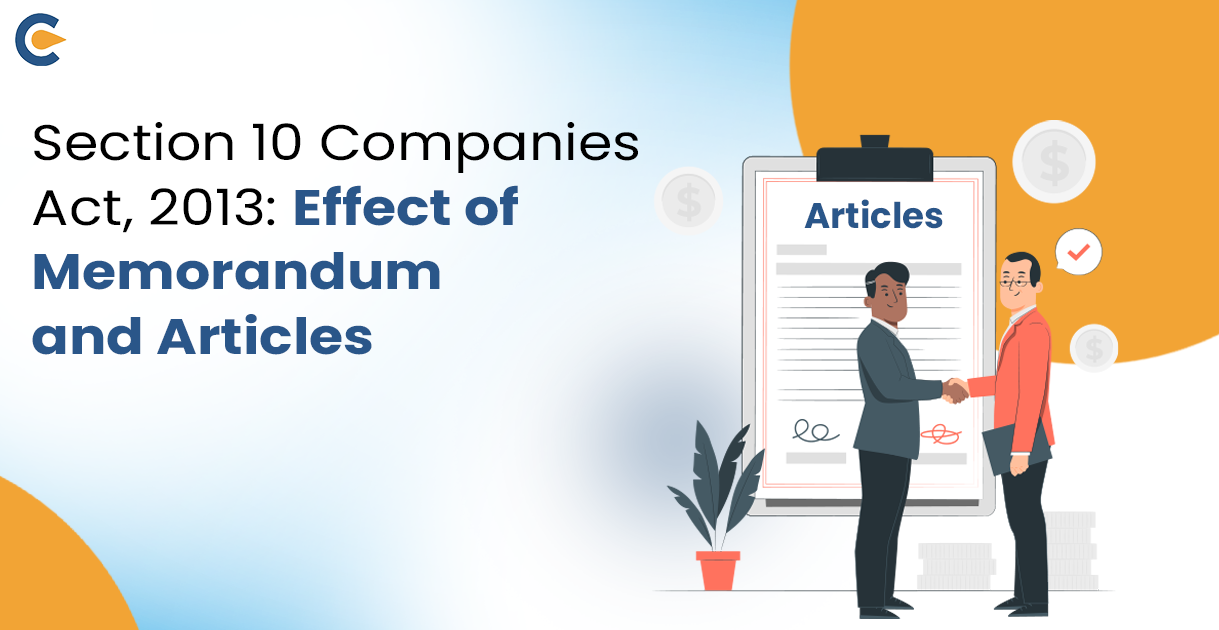The Companies Act of 2013 oversees corporate governance in India. It was enacted by the Indian government on April 1, 2013, and entered into effect on April 1, 2014. This legislation has been condemned for lacking clarity in a number of areas. The Act does not define a company and instead leaves it to the courts to decide.
The Companies Act of 2013 makes no provision for fines or penalties for violations of the Act. As a result, various courts issued contradictory decisions, along with the interpretation and execution of this Act. The Indian Parliament approved this legislation in order to provide a strong and effective regulatory framework for Indian companies.
The Companies Act of 2013 introduced a new concept of preparing minutes of the board meeting. The minutes must be approved by all members who attended the meeting. It also established the notion of a company secretary, who will be in charge of handling the affairs of the company.
What is a Memorandum of a Company?
Memorandum as defined under Section 2(56) of the Companies Act, 2013 refers to a company’s memorandum of association as initially drafted or as amended from time to time in accordance with any previous company legislation or this Act.
A Memorandum of Association (MoA) is the company’s charter. It is a legal document created during the creation and registration of a company. It establishes the company’s relationship with its shareholders and outlines the goals for which the company was created. The company is allowed to perform only the objects mentioned in the Memorandum of Association.
The Memorandum of Association is a publicly accessible document. Anyone can get the company’s MoA by paying the necessary costs to the ROC. As a result, it assists shareholders, creditors, and anybody else interacting with the company in understanding the corporation’s essential rights and powers before entering into a contract with it. Furthermore, the contents of the MoA assist prospective shareholders in making the best judgment when contemplating investing in the shares of the company. MoA must be signed by at least two subscribers for a private limited company and seven members for a public limited corporation.
In order to better understand the definition and concept of the Memorandum, you can read these Sections of the Companies Act, 2013 – Section 2(57), Section 4, Section 6, Section 10, Section 13, Section 15, Section 17.
What are the Articles of Association of a Company?
Articles as defined under Section 2(5) of the Companies Act, 2013 refers to a company’s articles of association as initially formed, as amended from time to time, or as applied in accordance with any prior company legislation or this Act.
Articles of association is an essential document for regulating a company. It can also be viewed as a contract between the corporation and its stockholders. The articles have been referred to as a firm’s “user guide,” and they often detail how the company will be organized and the process for shareholder meetings.
The articles of association outline the regulations that govern the firm and have been agreed upon by shareholders and directors. It describes the business’s management and administrative structure and duties, as well as shareholder rights. In terms of shareholders, the articles may also specify how shares and dividends will be distributed, as well as what voting rights shareholders will have.
The legal name of the company should be clearly established, and the articles will serve as the foundation for the company’s constitution. The articles of association may be kept at the company’s registration office and be accessible as a public document.
In order to better understand the definition and concept of the Articles of Association, you can read these Sections of the Companies Act, 2013 – Section 2(5), Section 5, Section 6, Section 10, Section 13, Section 14, Section 17.
Doctrines related to MoA and AoA
There are two commonly used doctrines in relation to MoA and AoA:
- Doctrine of Constructive Notice
Every company has its memorandum and articles of association registered with the Registrar of the Companies. The memorandum and articles become public papers since the office of the Registrar is a public office.
They are open and available to anybody. Therefore, it is the responsibility of everyone doing business with the company to review its legal documentation and ensure that its contract complies with its terms. However, whether or not someone really reads them, he is to be in the same position as if he had. He will be taken to be aware of what those documents contain. Constructive notice is the name for this form of assumed notice.
The result of this rule is that everyone interacting with the corporation is presumed to have read and understood those papers in accordance with their intended meaning. He is assumed to have been aware of both the company’s and its officials’ authority. Furthermore, all documents that must be registered with the Registrar in accordance with the Act are given constructive notice, not only the memorandum and articles.
- Doctrine of Indoor Management
Indoor Management limits the use of constructive notice to the company’s documents. The doctrine of indoor management plays a different function than the constructive notice rule. A person doing business with the company is therefore required to study just the public papers. The corporation is obligated if its contract complies with them. Any irregularity in the internal administration of the business will not have an impact on him.
This doctrine states that if a party to a transaction is satisfied that the transaction complies with the memorandum and articles of organization, they do not need to ask the corporation whether internal procedures related to the contract are being followed appropriately. For instance, shareholders are not required to inquire as to whether the required meeting was called and held correctly or if the required resolution was adopted legally. They have the right to assume that the corporation handled all of these actions in a professional way. The theory asserts that the public has a right to assume that internal processes are in accordance with records filed with the Registrar of Companies, and it serves to shield external members from the firm.
Section 10 Companies Act, 2013: Explained
Section 10 Companies Act states the effect of memorandum and articles after their registration with the Registrar of Companies.
- As per the provisions of this Act, the articles and memorandum, when registered, bind the company and its members to the same extent as if they had been signed by the company and each member, respectively, and contained covenants on its and his part to observe all the provisions of the memorandum and the articles.
Explanation – Once the memorandum and articles of the company are registered, they legally bind all the members and the company in the same manner and to the same extent as the company and every member has signed the memorandum and articles. This means members are bound to the company and vice versa. Moreover, the members are also bound to each other.
- All funds payable to the company by any member under the memorandum or articles shall be considered a debt owed by him to the company.
Explanation – All funds or money that the member has to pay to the company under the memorandum or articles will be regarded as the debt amount that the member owes to the company.
What are the Legal effects of Memorandum and Articles when registered?
The legal effects of memorandum and articles after their registration is given below:
- Each member is bound to the Company
Each member is believed to have signed the Memorandum and the Articles of the company. These documents are recognized as contracts between the company and third parties. As a result, the members are bound to the company by these documents.
- Company is bound to its members
The articles of incorporation bind the company and its members. A corporation is required to follow the provisions of the Articles of Association.
A member has the power to compel the firm to comply with a section in the Articles granting him the right to a share certificate. It is now established that a member can enforce or safeguard the rights granted to him as a corporate member.
- Members are bound to each other
These documents do not constitute a contract between the members. Even yet, the Articles have the effect of tying each member to the other members. However, members cannot sue each other. Typically, one member can sue another member through the corporation.
For example, if a member violates the business’s interests, another member may only sue him through the corporation.
- When a company is not bound by Articles
The Articles of Association in the case of Eley v. Positive Government Security Life[2], business include a section stating that A shall be hired as a solicitor of the business for life and should not be dismissed except for misbehaviour. As a result, A was appointed as the company’s solicitor, and he also became a stakeholder during his tenure.
His services were eventually terminated by the corporation. He remained a stakeholder, though, and sued the corporation for breach of contract. The Court of Appeal ruled that no action would be permitted.
Conclusion
The two most important documents of the company are its Memorandum and Articles. Therefore, it is important to understand the effect of these documents on the company and its members after registration. After the registration of the Memorandum and Articles, these documents become binding on the members and the company. This means that the members and the company are supposed to abide by these documents in all circumstances. Section 10 Companies Act, 2013 clearly specifies the effects of memorandum and articles after registration.
Read Our Article: Section 167 Vacation Of Office For Directors-Companies Act, 2013











